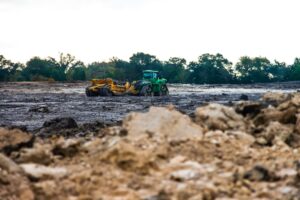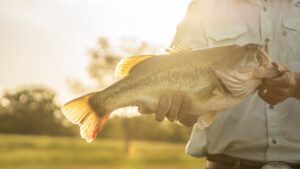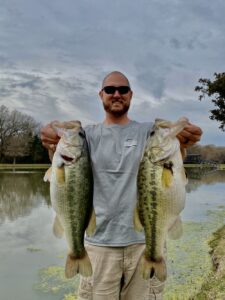WANT A NEW POND OR LAKE?
Having trouble getting started with building your dream trophy lake? Here is a typical customer who took their bare ravine with erosion problems to a bass producing lake in just 3 years. Follow our beginner’s guide to building a pond!
Year 1
As a first step in building a lake, a thorough assessment of the existing watershed, soil type and yearly rainfall amounts are performed to determine the type and size of lake most suited to the area. Runoff water is also tested to see if lime is needed to raise pH.
Next, the lake is designed around the structure of the land and based on the preferred type of fish. Additionally, we will also determine whether a supplemental aeration system or whether adding a fish concentrating structure would be effective in realizing the landowner’s goals.

At this point, an earth-moving contractor is brought in to excavate the pond and make it the appropriate depth and size. By incorporating steeper slopes, excessive weed growth can be minimized, thereby reducing long-term weed control costs.
In some cases, an existing well can used in conjunction with rainfall to reduce filling time. Forage fish are stocked well ahead of the game fish to give the forage base time to reproduce.

This is also the ideal time to add a fish feeder and start a fertilization regime to increase growth rates. As a final step in building a quality fishery, the desired game fish are added. Learn more about our pond and lake stocking service.
Year 2
At the start of the second year, a survey is conducted to determine the health of the fish and at what rate they are growing. The survey enables us to determine the size, species and amount of fish ready to be harvested.

By the end of this year of your lake’s development, bass can be approaching the 3-5 pound mark and bluegill can be close to one pound. In addition to being the time to resume your fertization program, the spring is also when grass carp are added to control unwanted vegetation in the lake. Supplemental forage such as crawfish, shad or goldfish can be added to supplement the production of your lake and add sought-after pounds to your bass.
Year 3
By your third year, your lake should be yielding a minimum of 75 pounds of harvestable game fish per acre. To ensure the ongoing health and growth of your pond, there should be fertilization in the spring to ensure the proper plankton bloom.

The survey results in year three will not only show how close to lunker status your bass have become, but also is used to modify the size or slot limits used to keep your lake healthy.
At this stage of your pond’s development, your larger bass can be between 6-9 pounds, while bluegill will be up to 2 pounds in size. You are now the owner of a lake that can provide hours of enjoyment for young and older anglers alike, all while increasing the value and aesthetic property of your land.
Thanks for reading our case study and our guide to building a pond! Submit a contact form below if you are interested in seeing what we can do for you!